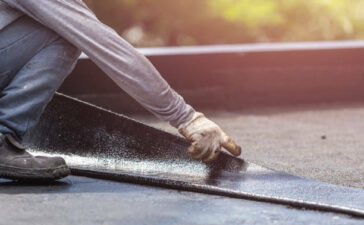Are you fed up with a dead interior? Maybe your space is a blank canvas in need of a splash of color. Whether you’re an interior design guru or still using the same furniture you shared with your college roommates, there are a few items that may take your house to the next aesthetic level. Sure, a great bookcase, bar cart, and a set of end tables may brighten up a room, but the only problem is that they take time to design and can be rather costly. Then indoor plants are the ideal answer for you; they demand a lot of love and only a small amount of money.
The greatest indoor plants may provide just the perfect amount of intrigue—they’re free-form and organic while still being clean and sculptural; they thrill with their unpredictability while being reassuring with their constant presence. And, happily, they have a considerably longer lifespan than cut flowers. We’ve gathered the greatest indoor plants into one article.
Aglaonema
This plant is simple to detect, yet only a few people are aware of its name. Aglaonema is a native South Asian green. Although there are several Aglaonema varieties, keeping this plant can be difficult because most of them do not stand harsh winter conditions. Of course, there are exceptions, such as Aglaonema Snow White, which is easy to care for and is a popular houseplant. The herb works well as an air cleanser. It is most renowned, though, for paving the way for good fortune and pleasure.
Aglaonema is sometimes overlooked as an excellent low-maintenance houseplant. It’s a pity because they’re so useful! They can withstand low light (even fluorescent lighting in some circumstances! ), don’t require a lot of attention, and can provide a splash of color.
The botanical name for this plant is Aglaonema, but it’s commonly known as Chinese evergreen. These plants, which have long, lance-shaped leaves, grow 12–24 inches tall and almost as broad inside.
Aloe Vera
We believe you are familiar with this one, and for good reason.
Aloe vera, a popular houseplant, is known for its soothing gel that may be used to treat sunburns and other skin irritations. This tropical succulent has over 300 species (the most popular being Aloe barbadensis miller), each with thick lance-shaped leaves with jagged edges that emerge from a basal rosette. Spikey blooms in colors of yellow, red, or orange will develop on the ends of stalks under the correct growth circumstances. Aloe planted as a houseplant can take years to generate flower stalks, and young plants seldom blossom. Still, in three to four years, this fast-growing succulent will achieve maturity and produce pups that may be repotted or given as presents to other plant enthusiasts. Having a green thumb isn’t required.
Air Plants
There are approximately 600 different types of air plants available, and the greatest part is that they can survive without soil. They take moisture from the air instead.
They’re typically cultivated as indoor houseplants, where they thrive under fluorescent illumination, even though they’re perennial in a properly warm area. Air plants, which were formerly uncommon in commercial use, are now highly fashionable and widely employed.
Although Tillandsia has a large number of species, many of them lack common names. They’re simply referred to as “air plants” or “sky plants.” Alternatively, they might be sold just by the name of the species.
Cactus
Many houseplants require a moist environment to stay healthy, but cactus lovers don’t have that problem because these desert plants like dry air and moderate indoor temperatures. Although some sun is required for cactus health, several species may survive with only three hours of sunlight each day, and supplemental illumination can benefit specimens in north-facing windows.
A happy cactus may even surprise you with colorful blossoms, which is an added benefit for plants that already wow you with their exotic forms and prickly textures. These popular types will add elegance to mixed container plantings and create stunning solo exhibits because of their moderate growth and minimal maintenance needs.
Jade Plant
Who doesn’t adore the charming Jade plant’s circular, dark green, coin-shaped leaves? The Jade plant, also known as Crassula Ovata, is a popular indoor houseplant that requires very little care to survive and grow. In addition, the plant is very important in Feng Shui. This evergreen succulent is seen as a sign of good fortune, wealth, and luck.
Aside from that, folklore has said that nurturing a Jade plant may bring you great prosperity!
Spider Plant
Even for beginners, the spider plant is one of the easiest houseplants to cultivate. It’s one of the most intriguing as well. It features long, narrow leaves that grow in rosettes that drape over the pot’s edge, as well as longer branches that produce plantlets that may be rooted and split from the parent plant.
Although it resembles several of the air plants sold in stores, this kind requires soil and is bigger than many of the air plants available. These are frequently seen in bathrooms and laundry facilities.
These plants will thrill you, from easy-to-care-for to breathtakingly magnificent. We hope you choose at least one of them and begin to reap the advantages right away!






